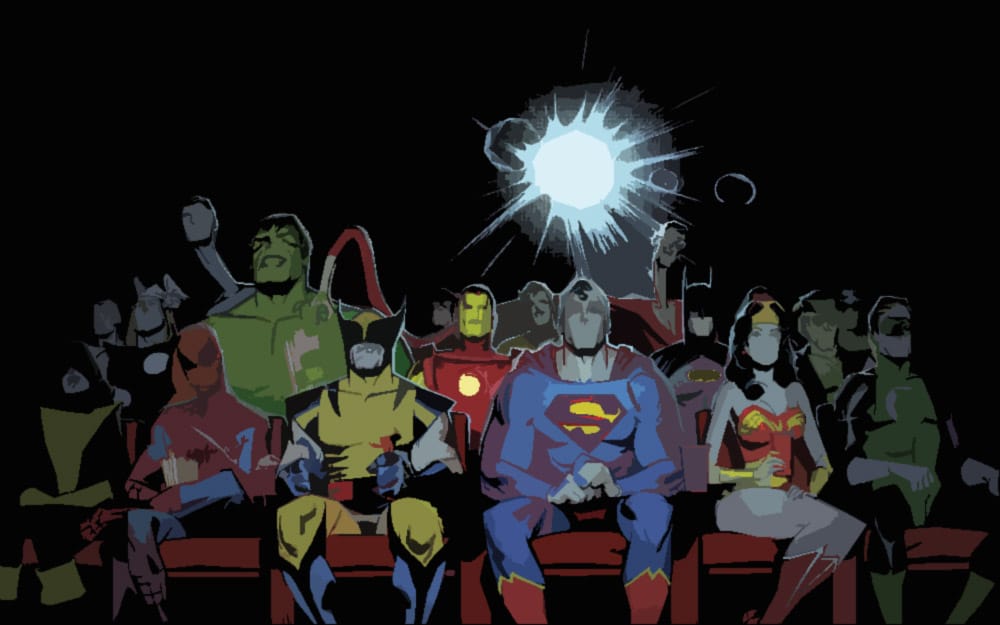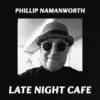[dropcap size=big]W[/dropcap]ith the release of Justice League and Thor: Ragnarok, plus plenty more in the pipeline (including the highly anticipated Avengers: Infinity War), it’s fair to say that superhero movies are big business. So saturated is the current superhero output in fact, that it’s easy to forget the comic book market was once a rather barren, cinematic landscape.
Beginning in the 1940s with superhero ‘serials’ which were basically multi-part episodes, screened weekly. Too discontinuous and clunky for audiences to sit through week after week – this format, understandably, never took off.
Man of Steel, Caped Crusader: Mainstream breakthrough
Nothing much happened throughout the ’50s and ’60s and it wasn’t until Richard Donner’s blockbuster, Superman, broke through to the mainstream in 1978, followed by Tim Burton’s take on Batman in 1989. But with the notable exception of Superman II (1981), studios failed to capitalize on the quality or success of either film.
Despite this sudden implosion, the success of Superman and Batman alone suggested that superhero movies could be box office gold
Despite this sudden implosion, the success of Superman and Batman alone suggested that superhero movies could be box office gold. But it wasn’t until the turn of the century that this potential was fully realized.
It’s a Marvel-ous addition: A rivalry is born
Enter Marvel. Up until this point Marvel had been Robin to DC’s Batman and hadn’t released anything of substance until Wesley Snipe’s now iconic, Blade vehicle was released in 1998. Things got better with the Bryan Singer directed X-Men (2000) and then Marvel really hit it big with Sam Raimi’s Spiderman in 2002.
Not to be left out of the conversation, Warner Brothers enlisted the help of Christopher Nolan to successfully reboot the Batman series in 2005, and suddenly, we had a serious DC vs Marvel cinematic rivalry on our hands.
We’ve now entered the multi-verse with the Justice League movies, each with their own spin-off waiting, as well as more obscure comic book titles like Guardians of the Galaxy and Deadpool becoming big hits in their own rights and spawning sequels
Cut to the present day and it’s become much more than a rivalry. We’ve now entered the multi-verse with the Justice League movies, each with their own spin-off waiting, as well as more obscure comic book titles like Guardians of the Galaxy and Deadpool becoming big hits in their own rights and spawning sequels.
Changing of the guard: Box office through the ages
Superhero movies have become a behemoth unto themselves but how has this transformation taken place and why has it taken so long? The monumental advances in CGI technology has played a huge part in this resurgence, as has the rise of social media and our fixation (or reliance) on it leading to a decline in our attention span. Just compare the major box office draws of the ’40s and ’50s to today.
Audiences lapped up Disney classics (Fantasia (1940), Pinocchio (1940) and Bambi (1942) – top 3 of the ‘40s), swords and sandals epics (Ben Hur (1959) and The Ten Commandments (1956)), and of course, the Hollywood classics (The Best Years of Our Lives (1946) and Bridge on the River Kwai (1956)) which achieved the rare feat of being both incredibly popular and critically lauded.
If you look at the movies topping the box office today, big budget superhero flicks dominate. Franchises such as Iron Man, The Avengers, and, of course, Christopher Nolan’s revitalizing Batman trilogy, have all achieved major mainstream success.
Shifts in movie going consciousness
Where audiences once craved verbose dialogue, big name stars, and classic Hollywood stories, now we want CGI effects, lots of action, and conflicted heroes in suits as metaphors for our own personal struggles.
This represents a paradigm shift in the tastes of moviegoers today. Where audiences once craved verbose dialogue, big name stars, and classic Hollywood stories, now we want CGI effects, lots of action, and conflicted heroes in suits as metaphors for our own personal struggles (and for our escapist fantasies).
Humor has even been added to the equation with the likes of Guardians of the Galaxy, and most recently Thor: Ragnarok, eschewing the more serious fare that’s usually associated with a superhero flick.
Since 2008, The DC and Marvel franchises have grown exponentially and seem to be competing at such a rapid intensity, that it’s hard to see it ever ending. Every major studio now wants a piece of the action and they continue to be validated at the box office.
DC and Marvel have truly become the Apple and Samsung of the movie world and seem to be exercising a duopoly on the rest of the movie industry, with no signs of slowing down.




